Thin Ethernet (10base2)
I have seen now so many messages on the News-Groups, on a
10base2 coax network-cable, there MUST be a 50 Ohm terminator on each end : One terminator MUST be grounded, the other NOT ! 50 Ohm terminator on each end :
One terminator MUST be grounded, the other NOT !
(And it does NOT work to plug the BNC-connector of the coax-cable directly onto the
BNC-connector of the NIC without T-connector !)
The dangerous issue: if you put on TWO not-grounded terminator or
if you ground BOTH terminators, the network does NOT fail completely, but I can guarantee
you problems: slow, unreliable, errors during data-transfer !
Thin Ethernet (10base2), sometime also called "Cheapernet",
is based on using a coax-cable, which is specified as RG58
(please, do NOT use other type of coax-cable, it has other electrical properties and will
not work properly) and which runs from system to system.
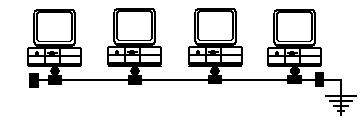
The cable is connected via BNC-T-connectors to the network card
installed in the PC.
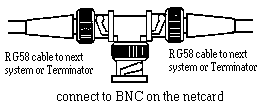
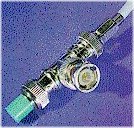
The T-connector must be put on the BNC-connector of the
network card !
(if you have a Combo / Multi-Connector Board, check, if you need to
select the BNC-port !)
It is NOT allowed to put in any extension/cable between the
T-connector and the BNC-connector on the network card !
If you do that, your network will either NOT work or becomes unreliable,
working slow or sometimes failing !
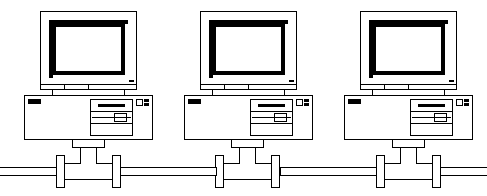 |
The T-connector isput directly on the BNC-connector of the Network board |
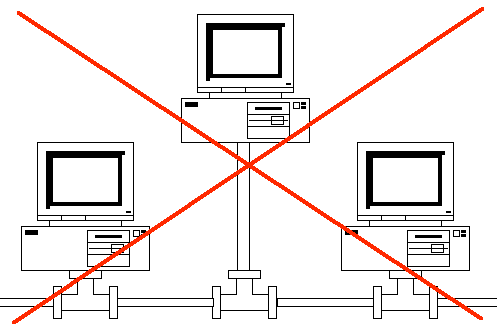 |
If one of the systems is located away from the cable,
you CANNOT use a drop-cable from the t-connector to the
BNC of the Network Card (NIC) ! It either does NOT work or works unreliable / slow ! |
Solution 1)
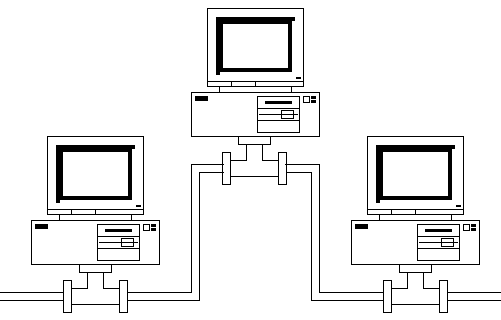 |
Run the cable to the system and then run it back (watch out NOT to exceed the Maximum allowed cable-length)! |
Solution 2)
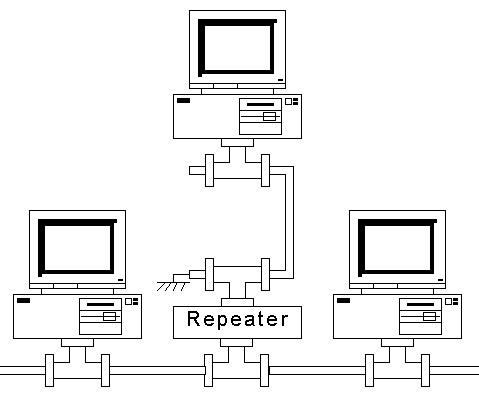 |
Put in a separate "Repeater", which allows to connect the remote located system on its own segment, which need to have its own terminators. |
So, a more realistic view on an installation is:
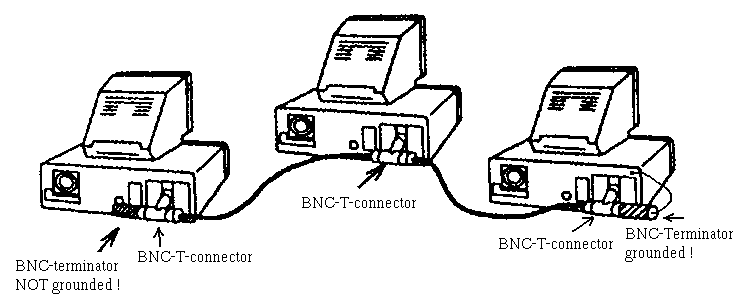
The cable swings from system to system (it is NOT allowed to put in
"junctions" , to connect for example 3 PC's in a Y-configuration).
At the end of the cable, the coax-cable MUST be terminated, using a BNC 50 ohm terminator.
Let me repeat that: 50
ohm terminators !
(and not 75 or any other value ! )
There are 2 different type of terminators:
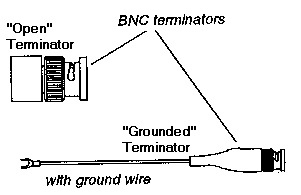
The original Thin-Ethernet specifications state, that the cable has to be terminated at
one end with an "open terminator" and on the other side with a "grounded
terminator", a wire or small chain, which has to be connected to a metal-part on the
back of the PC to get a grounding.
I know, that a lot of documentation shows only 2 "open" terminators,and that
"grounded" terminators are sometimes difficult to find. One small networks, it
even works "somehow", but not reliable and not at top-speed.
I have been asked several times:
"How do I recognize an OPEN and a GROUNDED
Terminator ?"
| No wire or chain : open terminator ! | |
 |
A wire or chain: a Grounded Terminator ! Don't forget to connect it to a metal part of the computer box, otherwise it is NOT grounded ! |
Limitations:
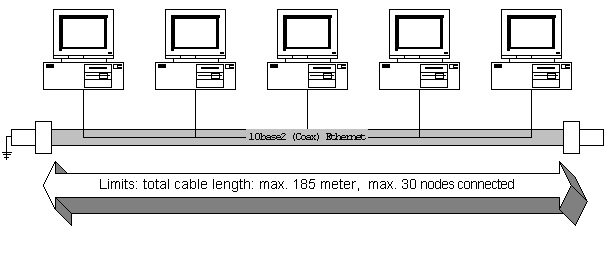
each connection to an Thin-Ethernet RG-58 cable is called a "node",
which can be a system like a PC, a UNIX-workstation or a Fileserver, but also anything
else connecting via a BNC-connector counts a a node (network printers, repeaters,....).
- maximum 30 nodes on one Thin-Ethernet segment
- minimum 0.5 meter distance between nodes
- maximum total cable-length of 185 meter
If more than 30 nodes need to be connected or if the total cable-length needs to be longer
than 185 meters, a repeater is the solution:
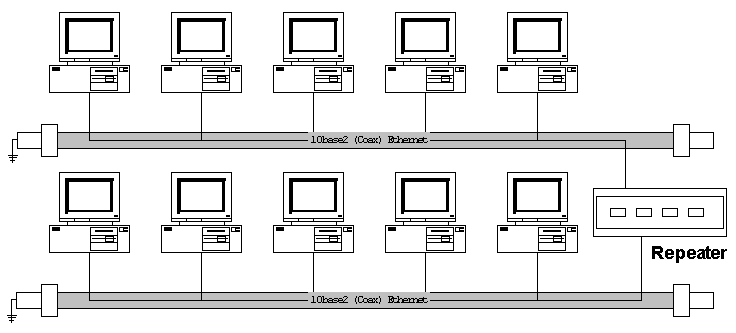
Multi-Segment network:
For each cable-segment, you need to be within the 10base2 limitation (max. 185 meter, 30 nodes), but this box called "Repeater" connects now the 2 (or even more) segments (some Multi-port repeaters can connect 4 or even 8 cables), which
in view of the users extends the cable-length beyond the 185 meters. More than 1
repeater can be used in a network, but there are limits (see Large Networks: 5-4-3 Rule).
On very large networks, it will be required to install Switches
to optimize network utilisation.
You want a "healthy" network ?
Then you need one "open" terminator at one end of the cable and one
"grounded" terminator at the other end of the Thin Ethernet cable !
Without proper "termination", the network may not work, it may work, but then
unreliable or slow.